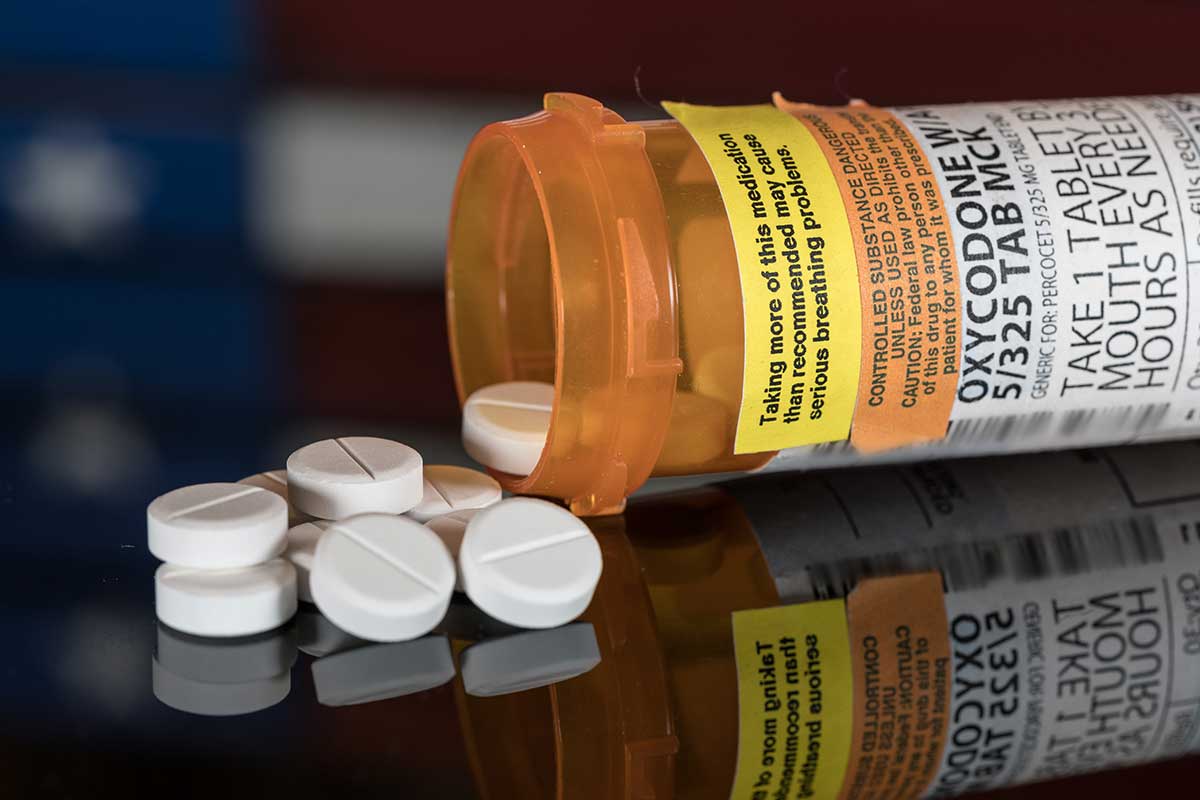Throughout the 1990s, many missteps in legal regulation and medical consensus surrounding opioids led to the first wave of the drug epidemic declared in 1999. Since then, opioid abuse disorders, overdoses, and deaths have gradually risen, and some argue we are reaching our fourth wave of the drug epidemic. But what were the origins of this systemic issue, and what’s being done to combat it? Delve into the history of the opioid epidemic and learn more about how you can make a change for the better in your community.
How Does An Epidemic Start?
The first step in understanding how the opioid epidemic began is to learn how epidemics start in the first place. Typically, epidemics are considered harmful and easily spreadable diseases that affect a large number of people in a particular region, community, or population. An epidemic is typically declared when a certain number of people have been infected or have died.
The opioid epidemic fits this description, as substance abuse disorder (SUD) is a medical condition that many suffer from, and the number of people affected or killed by its side effects warrants the classification of an epidemic.
What Led to The Beginning of The Opioid Epidemic?
Back in the 1800s, the idea of pain management was seen as an existential phenomenon and just a consequence of aging. Additionally, regulations on pain medication like cocaine and opioids were practically non-existent. You could receive a prescription for ailments ranging from toothaches to diarrhea. In fact, Bayer made their first fortunes in the 1890s by marketing aspirin and heroin as cough and cold remedies for adults and children.
In 1914, the Harrison Narcotics Act was enacted and regulated imports, manufacturing, and distribution of opium and cocaine. This led to the criminalization of those who had addictions and a lack of space for those with chronic and now potentially untreatable pain. Eventually, over the 20th century, this led to more advocacy of pain management by professional organizations, and a growing body of articles published on the safety and efficacy of opioids.
Between 1980 and the 1990s, the use of opioids as a treatment for cancer pain was of particular interest to researchers and doctors. Unfortunately, many cancer pain specialists did not fully understand the biopsychosocial complexities of chronic pain and misinformation surrounding the topic was rampant.
This misinformation culminated, and in 1995, the American Pain Society launched an influential campaign, “Pain as The Fifth Vital Sign,” with intentions to promote proper, standardized evaluation and treatment of pain symptoms. Eventually, the Veteran’s Health Administration voiced support for the campaign in 1999.
The 1990s saw an extreme increase and rapid distribution of opioids, known as the first wave (1999).
According to Howard Koh, professor of the practice of public health leadership and a member of the Stanford-Lancet Commission on the North American Opioid Crisis, the opioid crisis started in the mid-1990s when the powerful agent OxyContin, promoted by Purdue Pharma and approved by the Food and Drug Administration (FDA), triggered the first wave of deaths linked to use of legal prescription opioids.
The company released new formulations for opioids, including an extended-release oxycodone intended to reduce risks of abuse. OxyContin was marketed as a non-addictive solution for all forms of pain, not just pain related to cancer. From 1997-2002, opioid prescriptions grew from 670,000 to 6.2 million. By 2012, opioid consumption increased another 250%.
The Waves of the Opioid Epidemic
Wave 1 was recognized in 1999-2000 and specifically dealt with mass addiction to , and overdose deaths related to use of, prescription opioids. As addiction and societal issues began to worsen, regulations on synthetic and semisynthetic opioids were implemented. However, instead of lowering addiction rates, it created a new opening for another drug starting to dominate the market: heroin.
From 2010-2012, heroin death rates across 28 states doubled (representing 56% of the US population). This was known as the beginning of the second wave. This wave saw a direct causation from the regulation of opioids as heroin became increasingly cheaper and easier to acquire than opioids and caused similar effects. About 3 in 4 heroin users at this time were reported to have abused prescription opioids before heroin.
Shortly after, in 2013, the US saw its third wave starting to rear its head. Throughout this year, opioid-involved overdose deaths (OODs) involving synthetic opioids increased significantly with the introduction of the illicitly manufactured drug fentanyl.
Fentanyl is a synthetic opioid that is generally prescribed to treat advanced cancer pain. However, dangers stem from it being 50-100x more potent than morphine. Although prescribed fentanyl can be sold illicitly for misuse and abuse, most recent cases of fentanyl-related harm, overdose, and death are connected to illegally produced fentanyl.
The market for fentanyl also continues to change, as the drug is often combined with others like heroin, counterfeit pills, and cocaine. Some experts argue that fentanyl combinations, especially with stimulants like cocaine and similar substances, are rising. With research being so new, it also is met with little treatment or prevention initiatives, leading to a potential 4th wave, especially after the intricate effects of COVID-19.
The Hidden Contributors
It’s generally believed the opioid crisis represents a multi-system failure of regulation, from drug approval through to a system that relies on the pharmaceutical industry, not regulators, to educate doctors on best prescribing practices.
Geographical Issues
Opioid-involved overdose death (OOD) rates accelerated rapidly in rural communities during the epidemic’s beginning, a problem that was almost entirely new to these communities. This led to a lack of resources to treat those suffering from prescription opioid use disorders during the first wave.
By the second wave, heroin use and OOD rates accelerated in urban areas, but by the third wave, both rural and urban populations were affected just as severely. This third wave, from 2013 to 2019, saw use of fentanyl increase 12-fold. COVID-19 also coincided with the fourth wave, worsening the opioid crisis in almost all county types.
This research suggests that policymakers need to reevaluate the initiatives used to combat the epidemic as urban strategies may not work or even worsen the issues in rural communities and vice versa.
Industry of Influence
In 2012, over 250 million prescriptions for opioids were written: enough to give every single person in the U.S. their own personal prescription.
One of the contributing factors to the opioid epidemic was arguably the influence of the pharmaceutical industry on the prescribing behaviors of medical professionals. Financial payments from drug companies to U.S. physicians are common.
One analysis found that doctors who received payments related to a particular prescription medication in 2016 wrote 45% more prescriptions for the drug, on average, than doctors who received no payments.
More than one in five doctors who prescribed OxyContin under Medicare in 2016 had a promotional interaction with the drug’s manufacturer, Purdue Pharma.
A Harvard study found that more than 100 doctors were found to earn more than six figures strictly from opioid manufacturers in 2014 & 2015. Another ~1,000 doctors were found to earn around $25,000 from manufacturers.
In 2018, in response to the opioid crisis, California legislators passed a ban on physician “gifts," prohibiting drug makers from providing flights, travel, speaking fees, entertainment, consulting payments, or other financial benefits to healthcare providers.
Other states that ban paybacks to physicians from the pharmaceutical industry include Vermont, Massachusetts, and Minnesota.
So Where Does That Leave Us?
Over the past 20+ years, the opioid epidemic has become a complicated maze with many systemic and societal issues at play. Unfortunately, these issues only seem to compound on one another, leading us into a potential fourth wave of the pandemic. Currently, high mortality rates among users involving cocaine and methamphetamine are on the rise and with information still developing, treatment and prevention are also only just beginning. Although these drugs aren’t considered opiates, most of the deaths reported involve opioids and are increasing.
Despite all this bad news, however, there are initiatives being taken to reverse the epidemic. There are prescription drug monitoring programs and state prescription drug laws, but some insurance programs are also starting to manage their prescription forms, assessing prior authorization, quantity limits, and drug utilization review.
Education for providers about opioid prescribing guidelines is also helping to facilitate conversions with patients about the potential risks and benefits of different treatment options. These and other quality improvement programs in health care systems aim to increase the implementation of the best prescribing practices.
Last but definitely not least, prevention at home and understanding the safe usage and storage of opioids are also becoming more common. Improving awareness and sharing resources about the risks of prescription opioids and the cost of OOD on patients and families.
Check out these blogs for strategies on how to tackle prevention starting at home:



